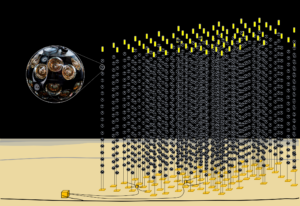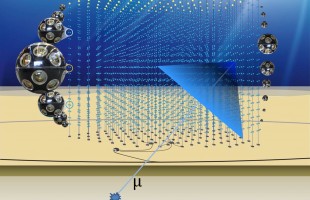The KM3NeT neutrino telescope in the Mediterranean Sea was expanded by three new lines in a record 24 hours last week. It also features a section making other observations on the seafloor.
The new lines were taken by hoist ship from Toulon to their location within KM3NeT, where they were sunk to a depth of 2.5 kilometers within 24 hours. In total, KM3NeT now comprises 39 lines, all but two of which are fully functional. The operation also involved retrieving a beacon with a depleted battery.

KM3NeT searches the dark deep sea for traces of light created when neutrinos hit an atom in the water. Neutrinos are virtually massless elementary particles, derived from nuclear processes, that rarely collide with other matter after their creation.
KM3NeT is searching for the sources of these particles in the night sky, as well as investigating the properties of the ghost particles themselves. Eventually, the instrument should include hundreds of lines of light sensors and monitor a cubic kilometer of dark seawater.
The three lines in the French ORCA section of the neutrino telescope under construction have now been connected by unmanned Bathybot submarine and are working properly. From each line, all 18 detector spheres are active and providing measurement data, reports the KM3NeT collaboration.


